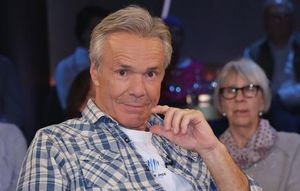In a cinematic portrayal that aims to capture the historical courtroom battle over one of India's most infamous events, Kesiari: Chapter 2 emerges as a loud, bombastic drama that often prioritizes style over substance. Released on April 18, 2025, the film, directed by Karan Singh Tyagi, features Akshay Kumar as Malayali lawyer Sankaran Nair, who bravely takes on the British Crown and General Reginald Dyer, the man responsible for the 1919 Jallianwala Bagh massacre in Amritsar.
The film opens with the harrowing scenes of the massacre, where Dyer ordered the killing of unarmed Indians protesting peacefully. This brutal introduction sets the stage for Nair's legal crusade against Dyer, whom he accuses of genocide. However, the film's portrayal of Nair's character is less than nuanced, as he begins as an anglicized lawyer who accepts a knighthood while his fellow countrymen suffer. A pivotal moment comes when he encounters a 'Dogs and Indians not allowed' sign outside an elite club, sparking a change in his perspective.
R. Madhavan portrays Neville Mckinley, Nair's adversary in the courtroom, and while his performance is compelling, it is overshadowed by the film's overall lack of depth. The courtroom scenes, while tense and dramatic, often feel over-the-top, with Kumar's character delivering lines that seem more suited for a theatrical performance than a serious legal drama.
Supporting characters, such as the young lawyer Dilreet Gill, played by Ananya Panday, are introduced to provide motivation for Nair's transformation. Gill, who reminds Nair of the fight for equal rights, plays a crucial role in pushing him towards his legal battle against Dyer. However, her character, like many others in the film, lacks sufficient development, making it difficult for audiences to fully engage with their journeys.
Despite its heavy themes, Kesiari: Chapter 2 often resorts to cliché and melodrama. The film's reliance on loud courtroom theatrics and exaggerated performances detracts from the gravity of the historical events it seeks to depict. Critics have noted that the film feels more like a star vehicle for Kumar than a genuine exploration of the complexities surrounding the Jallianwala Bagh tragedy.
Moreover, the film has been criticized for its portrayal of British characters, particularly Simon Paisley Day's depiction of General Dyer. His performance has been described as cartoonish, lacking the menace that such a historical figure should embody. The film's stylized approach to depicting the massacre itself has also drawn scrutiny; the brutal reality of the event is glossed over by a visually appealing but emotionally distant presentation.
As the courtroom drama unfolds, the film attempts to address contemporary issues of media suppression and the manipulation of narratives. However, these references feel superficial and do not contribute meaningfully to the storyline. The film's climax, while predictable, does deliver a powerful message about the ongoing demand for an apology from the British Empire, yet it fails to evoke the emotional response that such a moment should inspire.
In the end, Kesiari: Chapter 2 presents a missed opportunity to delve deeper into the historical significance of the Jallianwala Bagh massacre and the legal battle that followed. While it features strong performances from its cast, particularly Madhavan, the film ultimately falls short of delivering a compelling narrative that does justice to the real-life events it aims to portray. The film's loud and bombastic style may entertain some viewers, but for those seeking a thoughtful exploration of history, it leaves much to be desired.
As the credits roll, audiences are left with the stark reminder that India continues to wait for acknowledgment of the injustices suffered during colonial rule, underscoring the film's central theme of seeking justice and recognition for past atrocities.






